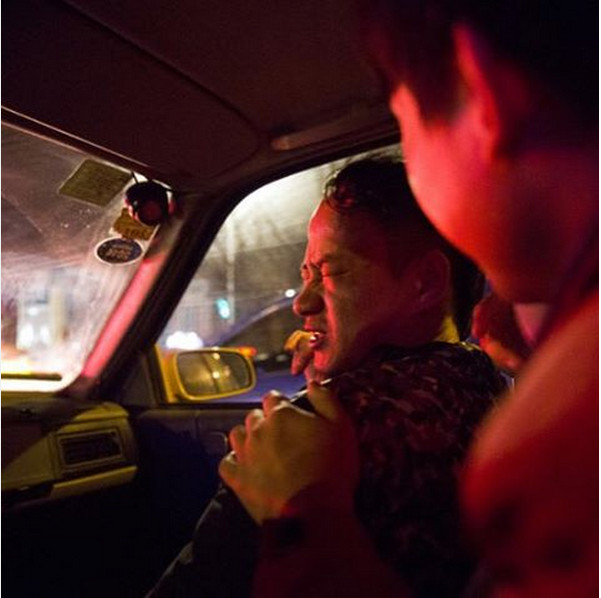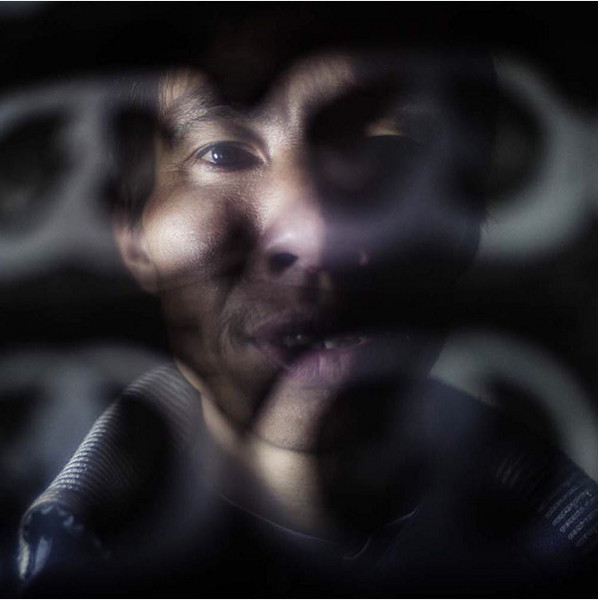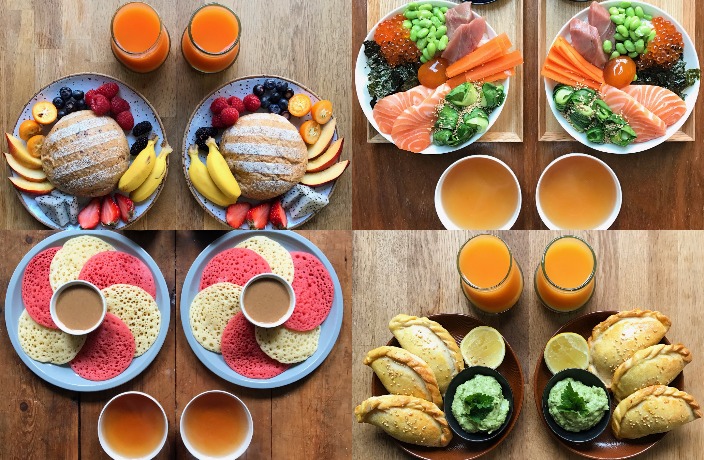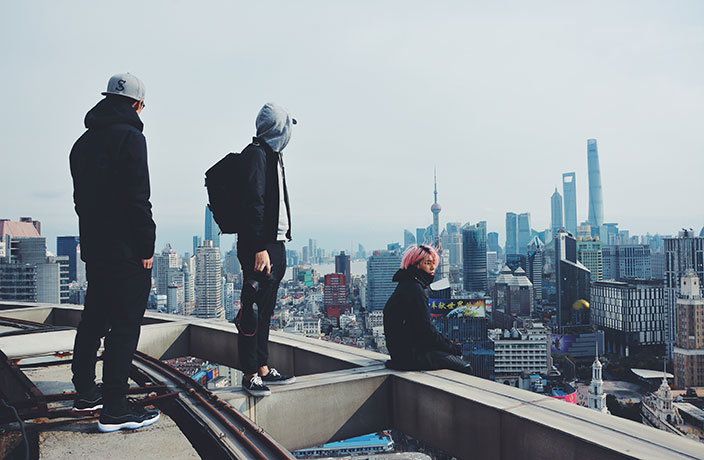Gaining 24,000 Instagram followers in four months is something of an achievement. Doing so organically – without ever being one of the social media app’s ‘suggested users’ – makes the feat even more impressive. But photojournalist Kevin Frayer, a co-founder of the Eyes on China Project (@eyesonchinaproject), seems more excited by an email he’s just received from
a follower.
“Hi, I’d just like to say that I think the project is a fantastic idea,” he reads aloud from his phone. “Many people, especially where I come from in Scotland, have a very stereotypical view of China. They picture it to be very industrial and are only aware of the touristy spots shown in the media. However, the images in your project help show China in a completely different light, which should hopefully refresh some opinions.”
“I can go a month without writing a message that long to my mother,” Frayer jokes.
The email perfectly encapsulates the Canadian’s hopes for the project. Along with fellow co-founder Fred Dufour, Frayer has brought together “twenty-something” professional photographers from across the country to present a more nuanced view of life in China. From intimate portraits of the mentally ill to street scenes in first-tier cities, the contributors’ portraits offer a range of perspectives arguably unparalleled in traditional media.
“When I was a consumer of images from China from the outside, the standard view was always something very austere – or just people walking past a Mao portrait,” explains Frayer, whose career has seen him win a World Press Photo Award and a Pulitzer Prize nomination. “There is this very narrow picture of China that so many people have.
“As a photojournalist working here, I understand you have to take those kinds of pictures sometimes – because it’s National Day or the marathon. But beneath that tiny layer there are so many more incredible layers. There was one month that I started with drag queens in Guangxi and ended in the Altai Mountains in minus-35 with Kazakh horseman. That’s China.”
Click on any image for the photographer's Instagram account

"The photo was taken at a marriage market in Shanghai. We'd spent the afternoon trying to chat with these 'hustlers' who match couples. We were walking around and this guy definitely stood out. He had this huge wall of ads with descriptions of people - height, age, education and sometimes a photo. If you are interested in someone, you pay a small fee and he'll give you a contact. For 50 to 100 renminbi he'll keep your ad on the wall for a month and try to get you a partner.
"He was really chatty and funny. But when I asked him to pose for a photo he did this really serious face, so he looks like a mobster (or a pimp, which is even more appropriate for his kind of job). This market isn't the easiest place to shoot because it’s quite personal - there are parents looking for partners for their kids. So it was nice to get a guy who was like ‘sure, bring it on - take a photo.'"
– Matjaz Tancic (@matjaztancic) –

“When I was taking this photo on my cell phone, one of the migrant workers asked me: 'Do you consider us migrant workers (农民工, literally ‘peasant worker’) or workers (工人)' I thought ‘worker’ sounded more respectful, so I said ‘workers’ and asked his opinion. He said he was a migrant worker because he has a rural hukou and migrated from Sichuan to Hebei to work. Wondering why he’d asked, I inquired about the difference. He said: "There's no difference. There shouldn't be. My former employer once told me: 'Don't think of yourself as a migrant worker. You're a worker.' For me they are equal.’ Despite my hesitancy, he was perfectly comfortable with the term and wanted to redefine it. People often talk about migrant workers' struggle to enjoy the same rights as urban residents, but I found it unusual to hear him express his desire for respect in such a personal and thoughtful way.”
– Yan Cong (@yancongphoto) –
The project’s success may stem, in part, from the diversity of its contributors. Hailing from Beijing, Shanghai, Guangzhou, Shenzhen, Chengdu and beyond, the group brings together professionals from across the newspaper, newswire and video-production industries. The foreign-to-Chinese ratio is evenly split at present, but the founders hope to tilt the balance toward Mainland photographers when the project gains more industry recognition (“the last thing we ever want this to be is White Guys’ Eyes on China,” Frayer stresses).
While the feed occasionally touches on the daily news cycle (relatives of MH370 victims or the caged rabbits used to test toxicity after the Tianjin blast, for instance), the majority of images show everyday scenes from the Mainland. Some are urban, others rural. Some are intimately human, while others put humanity to scale. Some are one-offs – stand-alone images that simply caught the eye – while others are shots from contributors’ own projects, such as Beijing-based Zhang Lijie’s collection on rare diseases like albinism (see overleaf). This variety is a direct result of the founders’ decision to put as few restrictions on their photographers as possible, Frayer explains.
“We started this as an exercise in photography. There’s no grand vision. We don’t curate it, and there are no regulations other than basic journalistic ethics and a standard of photography that is of a certain level. That’s it. We’re letting everyone take it wherever it wants to go. The only thing we ask our contributors to do is communicate and post pictures on the feed more than an hour apart from one another.”
The photographers in the project seem motivated by the chance to collaborate with likeminded people (or, as Frenchman Gilles Sabrié tells me of his reasons for joining the group: “Being a photographer can be a lonely life!”). Wider audiences and potential commissions may sweeten the deal, but Frayer believes they are attracted to “a non-competitive place in a competitive industry.”
As for the two co-founders’ motivations? It is a testament to their passion for Eyes on China that they take two hours from their work schedules (with Getty Images and Agence France-Presse respectively) to talk with me about an Instagram feed. But this is perhaps also a testament to the importance of social media in modern photography. Instagram, which turned 5 last month, has had a transformative effect on the way people take and consume photos, says Frayer.
“Visual media has never been more important than it is right now. It might not be so lucrative, but it’s more sought after – people are thirsty for it. When your 70-year-old mother has an Instagram account and she’s putting a Hudson filter on her picture from the lake in the summer…” he pauses, perhaps carefully choosing words about his mother. “It doesn’t mean that it’s a great picture, but it’s interesting to see somebody explore something that they otherwise wouldn’t.”

"These two men were fishing in the pond of Xian Village, which is in the center of Guangzhou. There has been conflict between locals and real-estate developers for more than seven years because of the unequal compensation and the corruption of the village's leaders. Xian epitomizes modern China. It was my second time visiting the village, and the pond and buildings were still there as before. When I climbed on top of a mountain of bricks I saw the two men fishing in the pond. The old buildings, and the high modern ones behind them, made for a huge contrast. People are really living in this environment. The scene was amazing, so I took out my camera and shot several images."
– Yuyang Liu (@yuyang_liu) –

"Du Jin is from Baotou city, Inner Mongolia and is 25 years old. He was diagnosed with manic depression (bipolar affective disorder) in 2012. I first met Du in Beijing when heíd just been fired from a tattoo shop and he was completely drunk. Heíd decided to go home to Baotou the following day because it had hit him so hard. I went with him and met some of his friends while they hung out drinking almost every night. Alcohol seems to be Duís only way out from his suffering, even though it provokes his condition. I took this photo after Duís friend had sent him home in a taxi. He was in manic state after days of drinking. For me, the red light on his struggling face indicated what he had been through. His friend tried to comfort him, which, at that moment, made me feel hope. Iíve got many shots of him alone but this one helps me better understand the relationship between Du and the people around him."
– Wu Hao (@wuhaophotography) –
It is this very democratization of photography which may attract criticism for accounts like Eyes on China. The fact that Instagram is currently blocked in the Mainland may pose the most obvious threat to the project’s growth, but there is another possible critique – that using industry-standard DSLRs and then later uploading the pictures undermines the instantaneous, layperson principles that the service was built on.
“Normally there’s no heavy filters but they still work,” argues Dufour, the quieter of the pair. “We’re all professionals, so it’s out of respect for the pictures and respect for the feed.”
“It’s all very straight and I like that – It’s done with no smoke and mirrors,” Frayer adds. “Plus, I would actually say that 80 percent of what I post is with my iPhone. The quality of the images on the iPhone 6 and the Samsung Galaxy is like 10 times better than on that one,” he says, motioning toward my battered 4S.
Exactly where the project goes from here is uncertain. The explosion of followers was unforeseen by both Frayer and Dufour. In any case, their hands-off approach means that the project’s future is not just up to them, but the group. As well as adding more photographers from different parts of China to help reach further into the country, an exhibition is also in the works. Neither this nor the pursuit of more followers is the real objective, says Frayer, though the latter may be beyond his control.
“The goal isn’t to have a million followers. It’s great if we do, but if 990,000 of them don’t really care about having Eyes on China in their feed, then it’s still just the 10,000 who we need. We have over 20,000 followers and we’re getting 800 likes on a picture, so you’re talking about almost five percent. Whereas you can have these accounts with a million followers who only get like 10,000 likes a picture [one percent].
“Anyway, the whole reason why we started this thing is that there are these huge parts of the country that just aren’t a part of China’s visual narrative. And it’s not just China. The criticism you have working in India [where Frayer was based before China] is that it ends up looking like one big religious festival. Or look how the North Korea narrative is always about people on the subway, when actually there’s everyone from farmers to people living in buildings that don’t look much different from Central Park.
“This is our chance to try and fill in all the blanks… or at least a few of the blanks.”

I took this in Yushu, Qinghai. The city was half-empty because everyone had gone to pick up cordyceps - a caterpillar fungus used in Chinese medicine. We met a trader who took us to meet some nomads collecting the fungus, while in the town we found the market where it is sold. I needed to show the money - because this stuff sells for a lot. But I also wanted to show that it is the intermediaries who make the most. In the center you see the middle-man, who is obviously not a nomad, and beside him you have the nomads looking at the money with envy. It's the same in every business. It's not the gold diggers who make the money, It's the people who take it to market. In some ways heís exploiting them, because many of the nomads don't have much education. But they make quite a lot too.
– Gilles Sabrié (@gillessabrie) –

China's first blind skiing team was established in the beginning of this year - before it had been announced that the 2022 Winter Olympics and Paralympics would be hosted by Zhangjiakou and Beijing. These students, all visually impaired and at a special needs school in Zhangjiakou, are aged between 12 and 16. This was the first time theyíd been given a pair of rollerblades and stood on snow tracks. Although a lot of us find it hard to believe that blind people could enjoy skiing, the children loved the feeling of ‘flying.’ After spending two days with them, I understood that the limits are not set by them, but by us.
– Zhang Lijie (@vincentsop) –





























0 User Comments